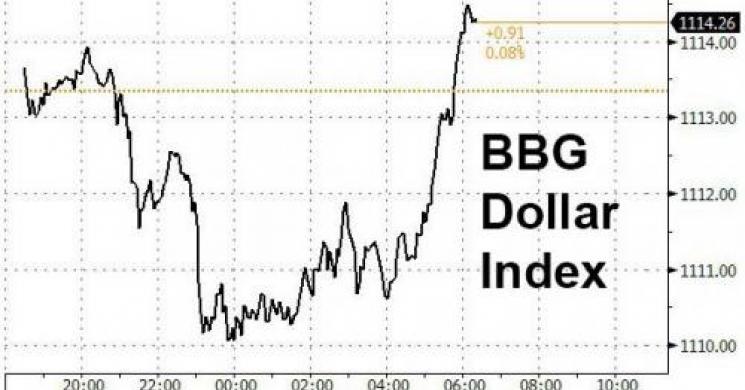
Earlier this week, the bizarre, unexplainable, ongoing plunge in the dollar and US bond prices in the aftermath of the stronger than expected CPI print which also sent equities surging, prompted at least one trader at Citi to explode: "Wake Up Folks, It's Not Risk Positive"
Then again, maybe it is not all that unexplainable.
As Deutsche's FX strategist, George Saravelos, writes, he has been getting numerous inquiries as to how can it be that US yields are rising sharply, yet the dollar is so weak at the same time?
He believes the answer is simple: the dollar is not going down despite higher yields but because of them. Higher yields mean lower bond prices and US bonds are lower because investors don't want to buy them, or as he puts it "this is an entirely different regime to previous years."
Below we repost his simple explanation, while highlighting that maybe...
... just maybe, the bottom for the dollar is now in?
From Deutsche Bank:
Blame the dollar on yields
We are well into 2018 and our feedback from recently attending the TradeTech FX conference in Miami is that the market is still struggling to understand or embrace dollar weakness. How can it be that US yields are rising sharply, yet the dollar is so weak at the same time? The answer is simple: the dollar is not going down despite higher yields but because of them. Higher yields mean lower bond prices and US bonds are lower because investors don't want to buy them. This is an entirely different regime to previous years.
Dollar weakness ultimately goes back to two major problems for the greenback this year. First, US asset valuations are extremely stretched. As we argued in our 2018 FX outlook a combined measure of P/E ratios for equities and term premia for bonds is at its highest levels since the 1960s. Simply put, US bond and equity prices cannot continue going up at the same time. This correlation breakdown is structurally bearish for the dollar because it inhibits sustained inflows into US bond and equity markets.
The second dollar problem is that irrespective of asset valuations the US twin deficit (the sum of the current account and fiscal balance) is set to deteriorate dramatically in coming years. Not only does the additional fiscal stimulus recently agreed by Congress push the fair value of bonds even lower via higher issuance and inflation risk premia effects, but the current account that also needs to be financed will widen via import multiplier effects. When an economy is stimulated at full employment the only way to absorb domestic demand is higher imports. Under conservative assumptions the US twin deficit is set to deteriorate by well over 3% of GDP over the next two years.
The mirror image to all of this is that the flow picture into both Europe and Japan has been improving dramatically anyway. We have previously written about the positive flow dynamics in Europe as the flow distortions caused by extremely unconventional ECB policy are starting to adjust. But the Japanese basic balance has also shot up to a 4% surplus in recent years helped by a big improvement in the services balance (Chinese tourists) and a collapse of Japanese inflows into the US: treasuries simply do not provide enough duration compensation any more. To conclude, embrace dollar weakness, it has more to run.
Read more by MarketSlant Editor








